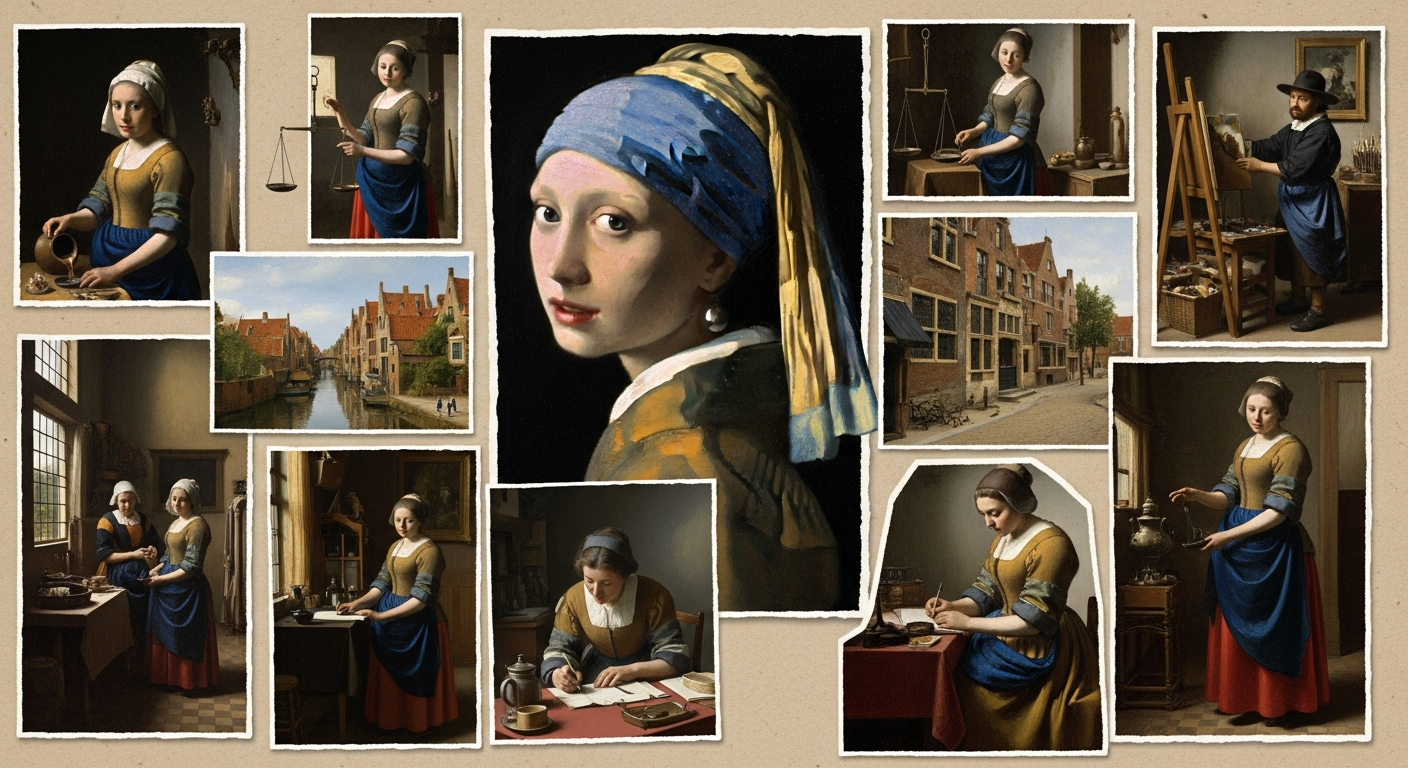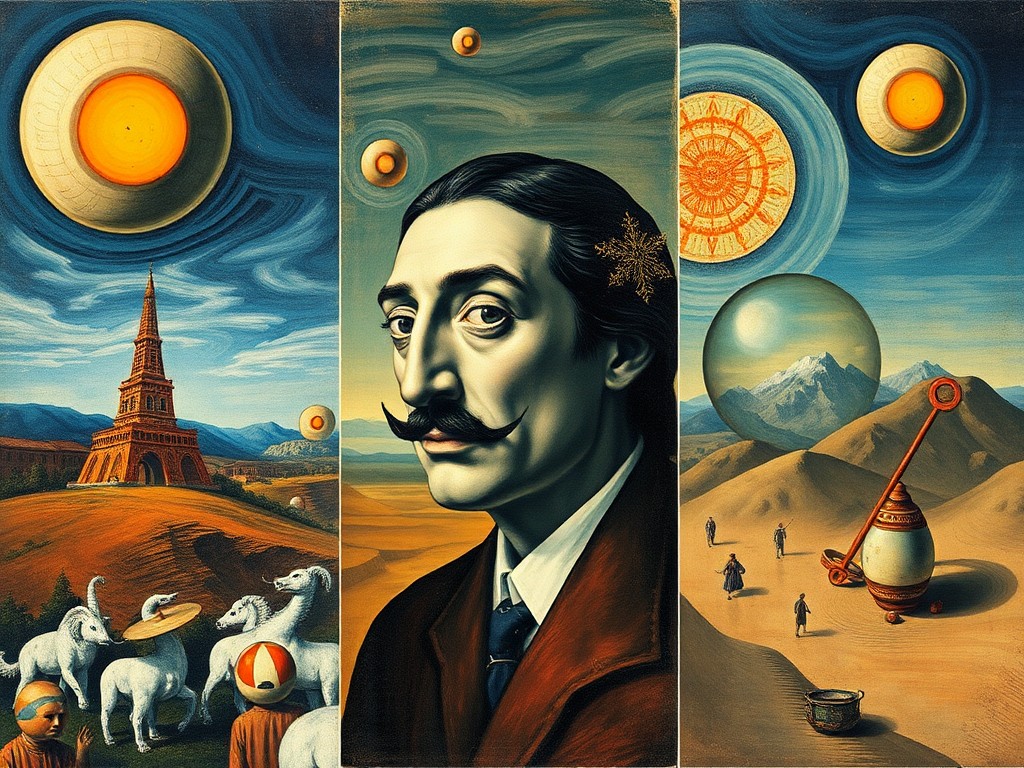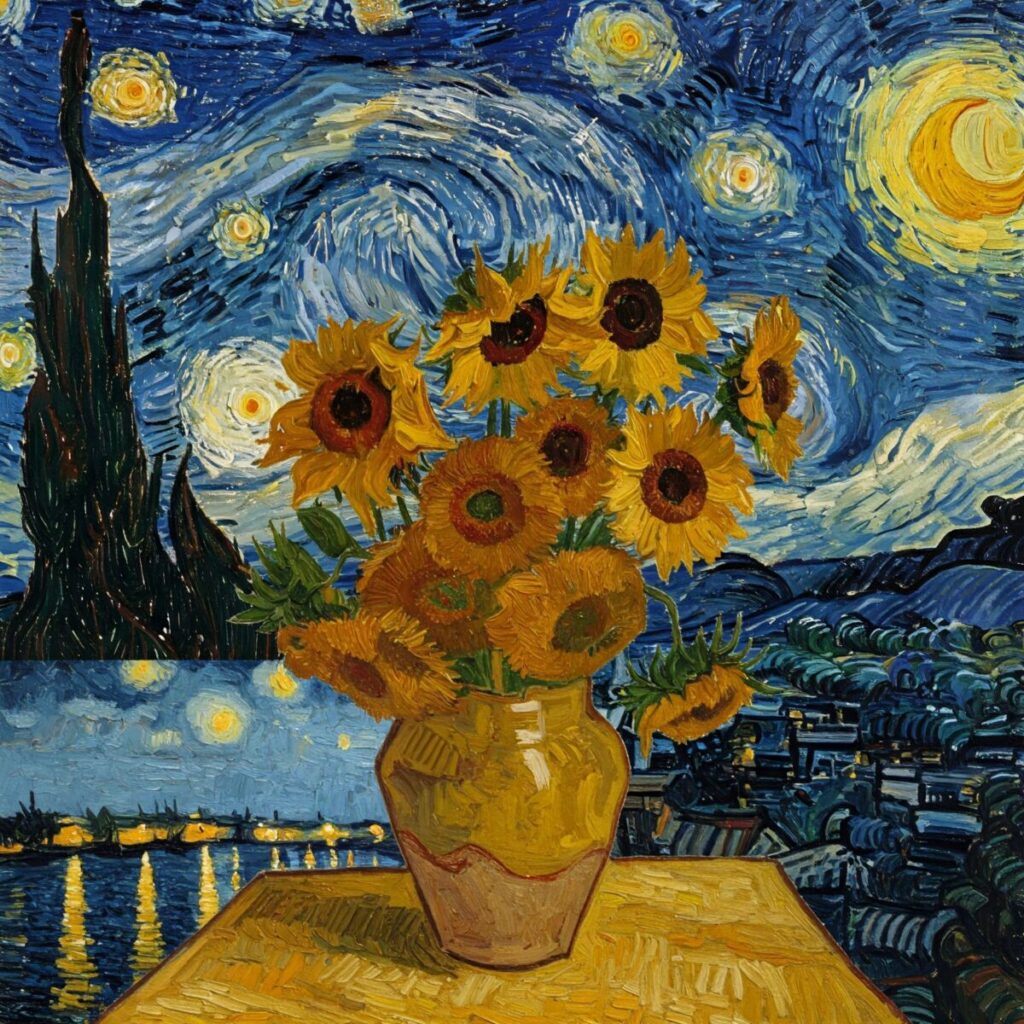Step into the quiet, sunlit rooms of 17th-century Holland with one of the greatest painters of all time, Johannes Vermeer. While he created only about 36 known artworks, the collection of Vermeer paintings has captivated the world for centuries. Vermeer was like a movie director who used light as his main character. He turned simple, everyday moments—a girl reading a letter, a maid pouring milk—into scenes of incredible beauty and mystery. He wasn’t as famous as Rembrandt during his time, but today, his work is treasured for its stunning realism and peaceful feeling. Let’s explore the top 10 Vermeer paintings that showcase his genius.
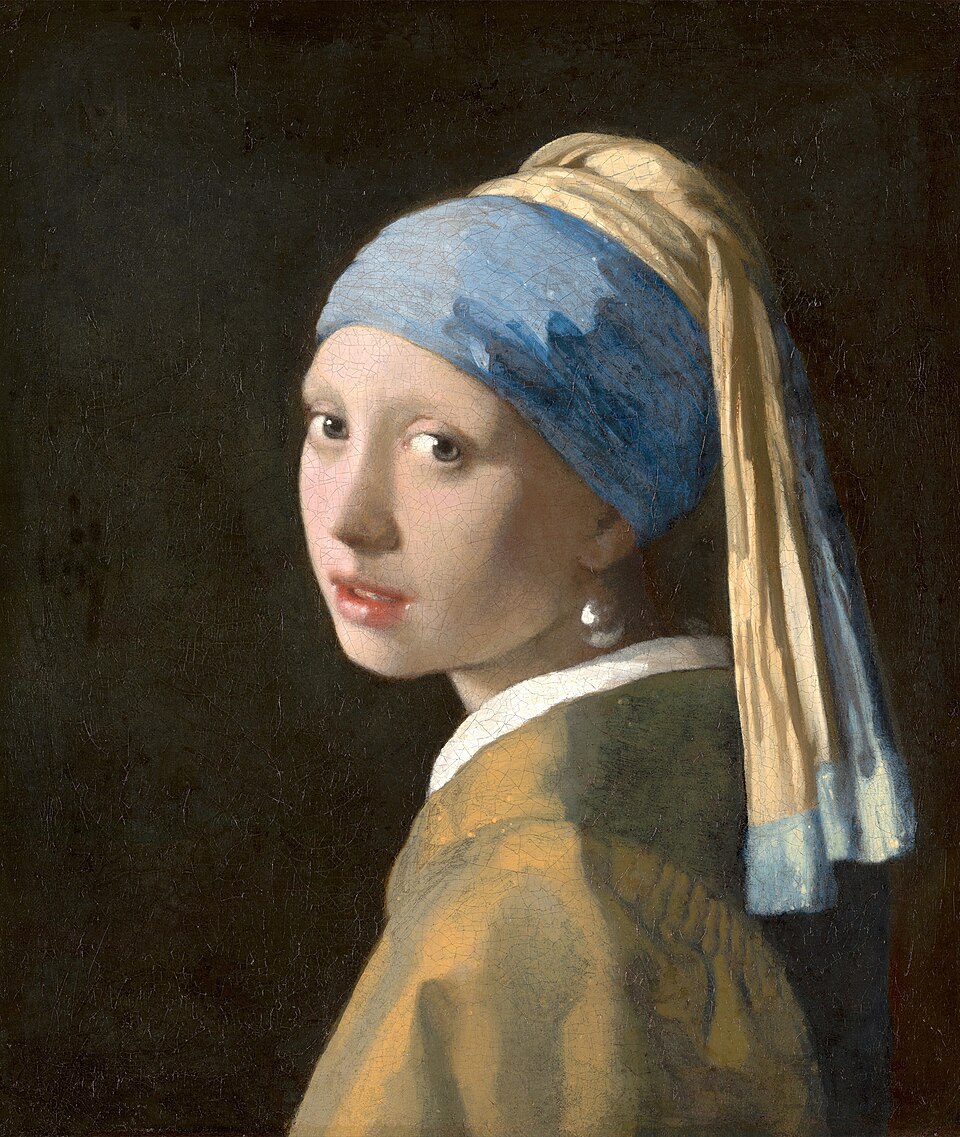
Girl with a Pearl Earring (c. 1665)
Description: Often called the ‘Mona Lisa of the North,’ this painting isn’t a traditional portrait. It’s a ‘tronie,’ a study of a head and shoulders in exotic costume. The girl’s mysterious gaze, the soft light on her face, and the impossibly shiny pearl earring make this one of the most famous Vermeer paintings ever created. She seems to be turning to say something, but we’ll never know what. Art historians believe the famous pearl is likely an illusion, just a few masterful strokes of lead white paint, rather than a depiction of a real pearl.
Painting Techniques: Vermeer used a dark background to make the girl pop, a technique called chiaroscuro. He masterfully blended colors with soft brushstrokes to create smooth skin tones and used a few simple dabs of white paint to create the illusion of a shimmering pearl.
Location: Mauritshuis, The Hague, Netherlands
Estimated Value: Priceless
The Milkmaid (c. 1658-1660)

Description: This painting makes a simple chore look heroic. A housemaid, focused and strong, pours milk into a bowl. Vermeer makes you feel like you are right there in the kitchen. You can almost feel the cool air and hear the quiet trickle of milk. He celebrates the dignity of everyday work in this iconic piece. X-ray scans show that Vermeer originally painted a map on the wall behind the maid but later painted over it to create a simpler, more powerful scene.
Painting Techniques: Vermeer used a technique called ‘pointillé,’ applying tiny dots of paint to create the illusion of shimmering light on the bread and basket. He also used thick paint, or ‘impasto,’ to give objects a realistic texture.
Location: Rijksmuseum, Amsterdam, Netherlands
Estimated Value: Priceless
The Art of Painting (c. 1666-1668)
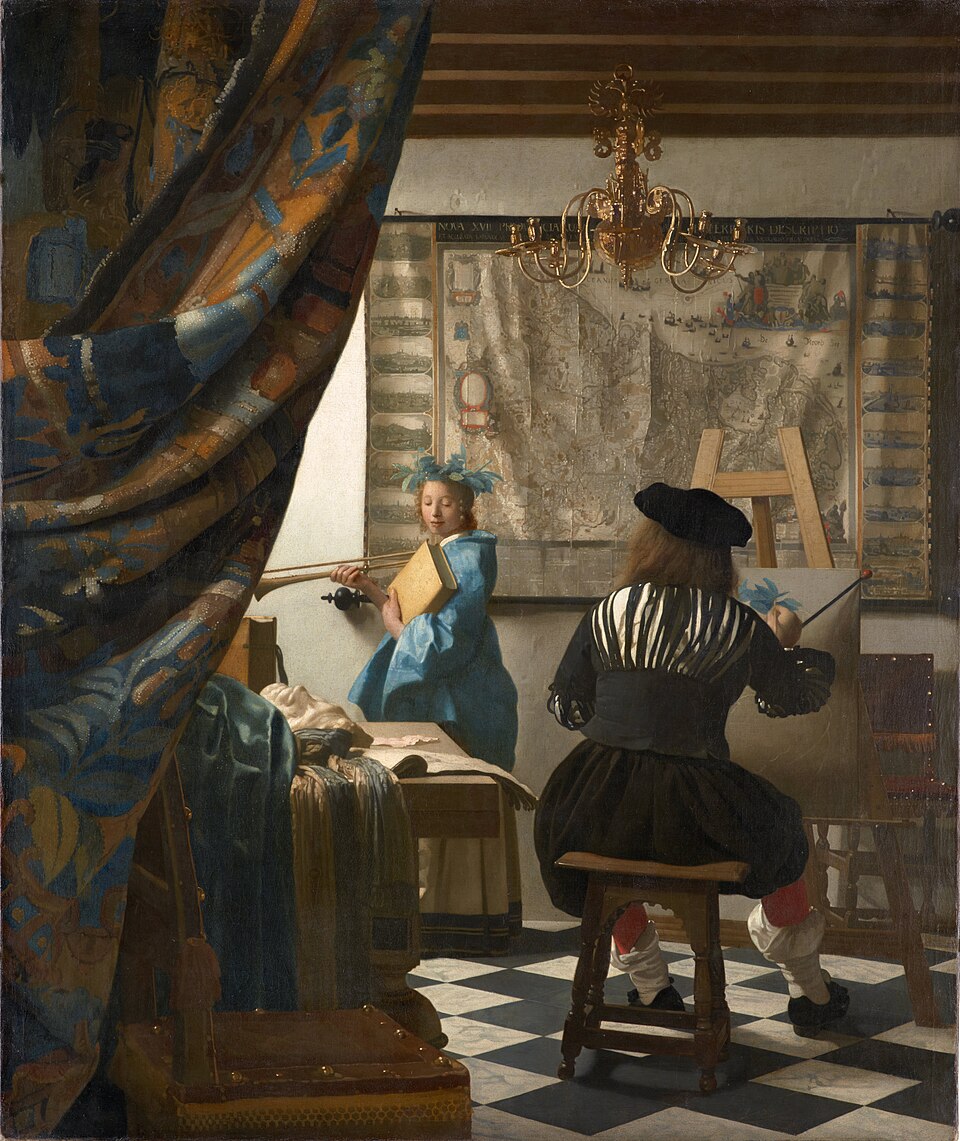
Description: This is Vermeer’s show-off piece! It’s a complex scene showing an artist (possibly Vermeer himself, with his back to us) painting a model who represents Clio, the Muse of History. The painting is an allegory, a story with a hidden meaning, about the importance and fame of painting. The detailed map and the heavy curtain pulling us into the scene are breathtaking. This artwork was Vermeer’s personal favorite; he never sold it during his lifetime and it remained in his family’s possession after his death.
Painting Techniques: Vermeer demonstrates his absolute mastery of perspective and light. He likely used a camera obscura, an early optical device, to achieve the painting’s photorealistic depth and accuracy.
Location: Kunsthistorisches Museum, Vienna, Austria
Estimated Value: Priceless
View of Delft (c. 1660-1661)
Description: This isn’t just a painting of a city; it’s a love letter to Vermeer’s hometown. He captures Delft on a calm morning, with clouds parting to let sunlight sparkle on the city’s rooftops. It feels incredibly peaceful and real, almost like a photograph taken over 350 years ago. It’s considered one of the greatest cityscapes ever painted. The famous author Marcel Proust called ‘View of Delft’ the ‘most beautiful painting in the world’ in his novel ‘In Search of Lost Time’.
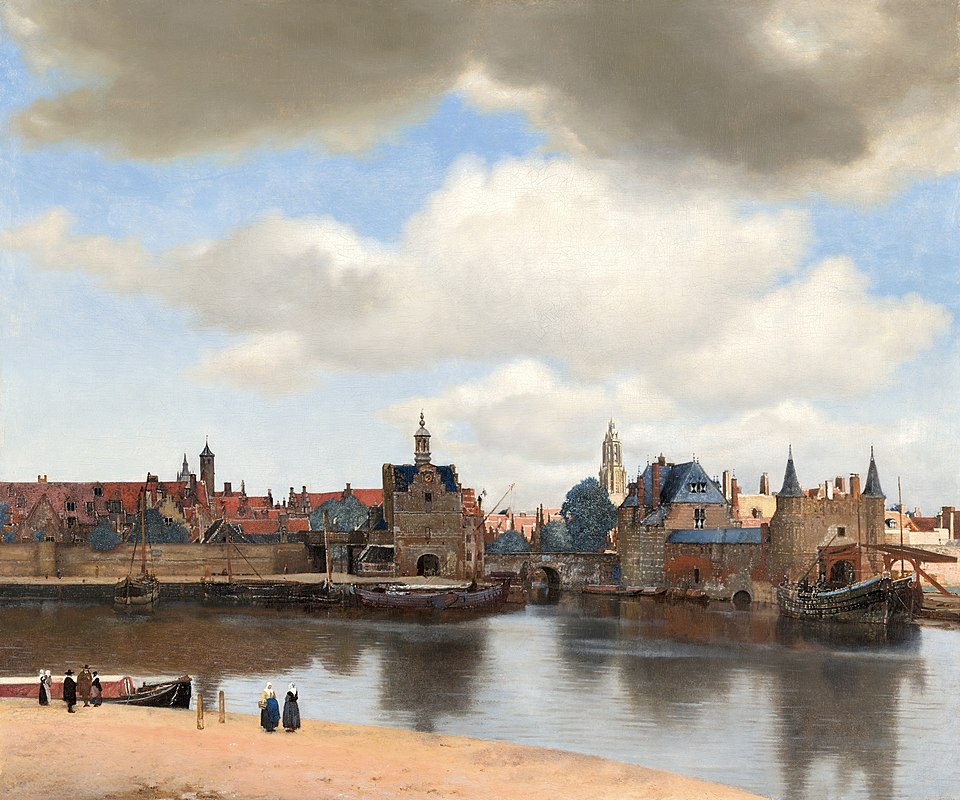
Painting Techniques: Vermeer used a mix of fine detail and broader strokes. He applied sandy-textured paint to create the roughness of the buildings and used his ‘pointillé’ dot technique to make light dance on the water and boat hulls.
Location: Mauritshuis, The Hague, Netherlands
Estimated Value: Priceless
The Little Street (c. 1658)
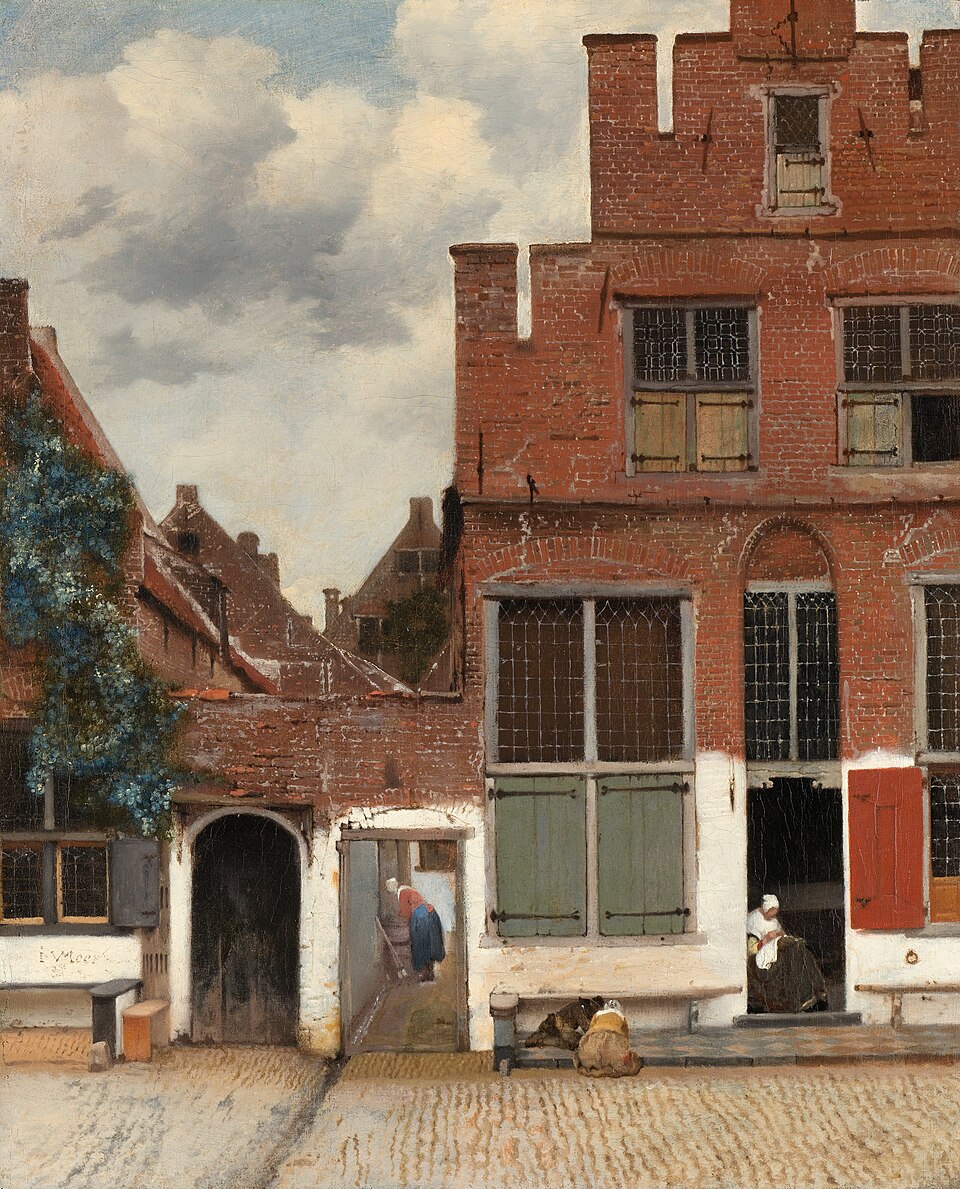
Description: Like ‘View of Delft,’ this painting shows Vermeer’s love for his city, but on a much smaller, more intimate scale. It’s a quiet look at the front of a typical Dutch house. We see women sewing and sweeping, and children playing. It’s a simple, everyday scene made extraordinary by Vermeer’s attention to the texture of the bricks and the peaceful atmosphere. For over 300 years, nobody knew the exact location of this house, but in 2015, an art historian successfully identified the spot in Delft where Vermeer painted this scene.
Painting Techniques: Vermeer’s incredible precision is on display here. He carefully rendered the worn bricks, cracked mortar, and reflective glass, creating a highly realistic and tangible view of 17th-century life.
Location: Rijksmuseum, Amsterdam, Netherlands
Estimated Value: Priceless
Woman Holding a Balance (c. 1664)
Description: In a dark room, a woman waits for her delicate balance to settle. On the table are pearls and gold, symbols of wealth. Behind her is a painting of the Last Judgment, where souls are weighed. This painting is a quiet reminder to live a balanced and thoughtful life, weighing spiritual wealth over material things. The painting of the Last Judgment on the wall behind the woman adds a deep layer of religious and moral meaning to the otherwise worldly scene.

Painting Techniques: The painting is a masterclass in composition and light. Vermeer positions the woman’s head directly in front of the Last Judgment painting, and the central point of the balance is the exact center of the canvas, creating perfect harmony.
Location: National Gallery of Art, Washington, D.C., USA
Estimated Value: Priceless
The Concert (c. 1664)
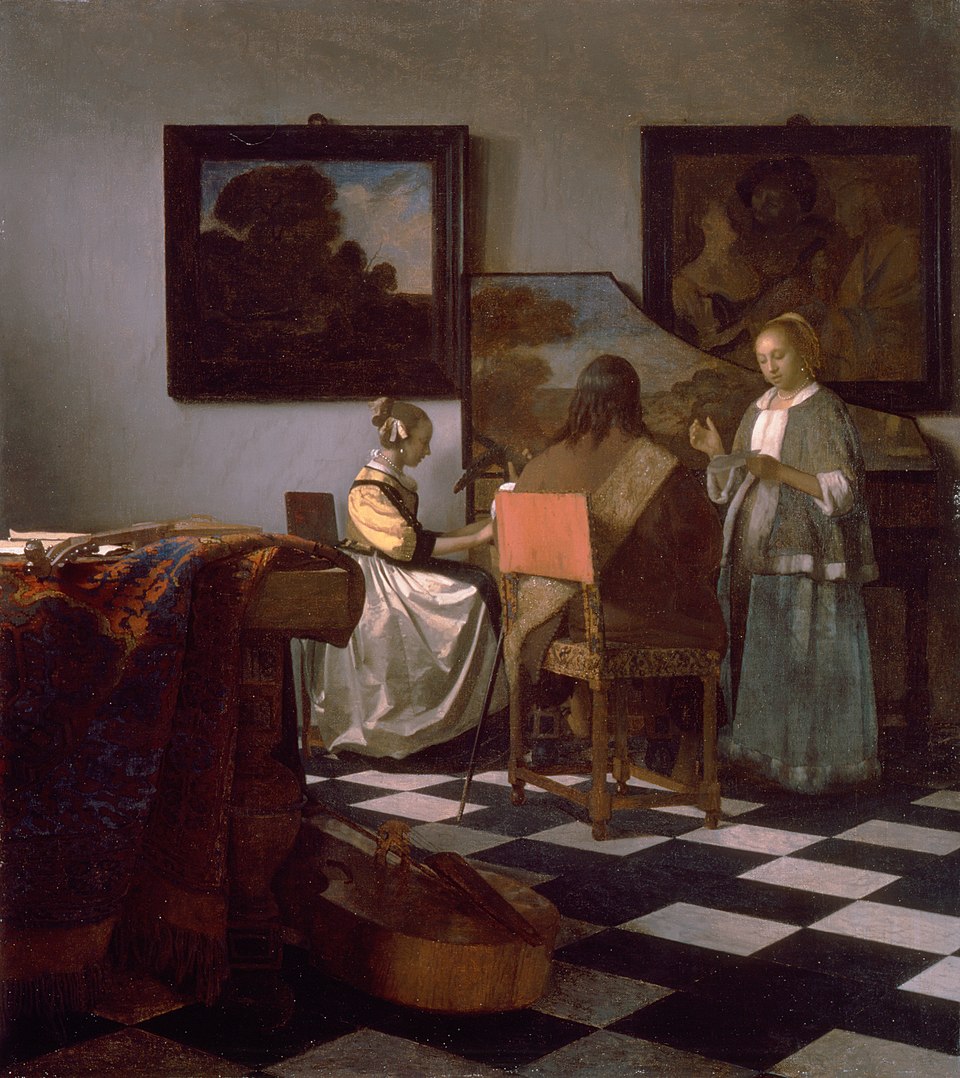
Description: A beautiful scene of music and quiet company, showing two women and a man playing music together in a well-to-do home. The painting’s peaceful mood is now overshadowed by its tragic history. It is perhaps the most famous stolen artwork in the world. This painting was stolen in 1990 in the largest art heist in history, and its empty frame still hangs in the museum as a symbol of hope for its return.
Painting Techniques: Vermeer’s skill in creating depth is evident here. The checkered floor tiles lead our eyes into the room, and the contrast between the dark foreground and the lit background creates a powerful sense of space.
Location: Isabella Stewart Gardner Museum, Boston, USA (Stolen in 1990)
Estimated Value: Estimated at over $200 million
The Music Lesson (c. 1662-1665)
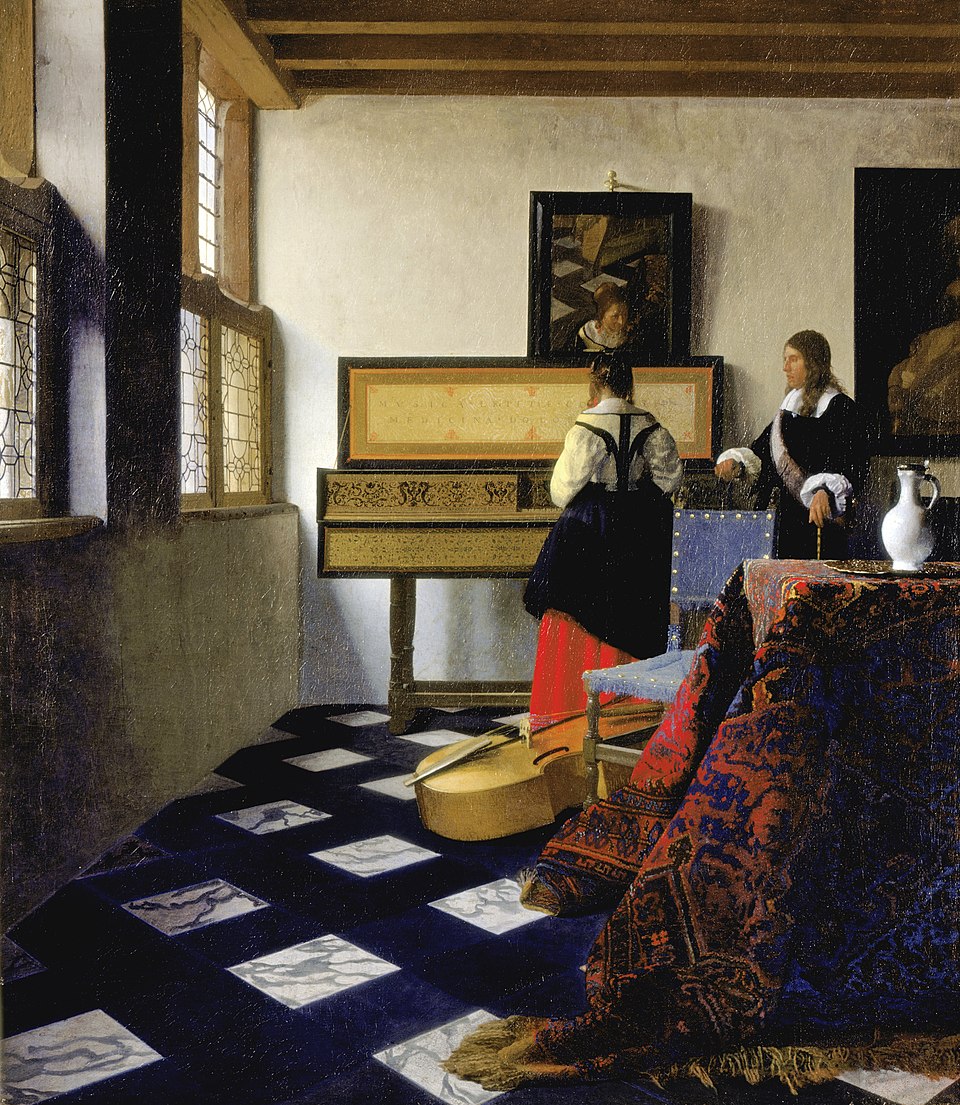
Description: A young woman receives a music lesson on a virginal (a type of harpsichord) from a male teacher. We see the scene from a distance, looking into a grand, sunlit room. The mirror on the wall reflects the girl’s face and the artist’s easel, adding a layer of mystery. Is this a simple lesson, or a story about love? The Latin inscription on the musical instrument reads, ‘Musica Letitiae Co[mes] Medicina Dolor[is],’ which means ‘Music is a companion in pleasure and a balm in sorrow’.
Painting Techniques: Vermeer uses strong linear perspective, with the floor tiles and ceiling beams drawing our eyes deep into the room. The careful placement of objects creates a perfectly balanced and orderly composition.
Location: The Royal Collection, Buckingham Palace, London, UK
Estimated Value: Priceless
Christ in the House of Martha and Mary (c. 1655)
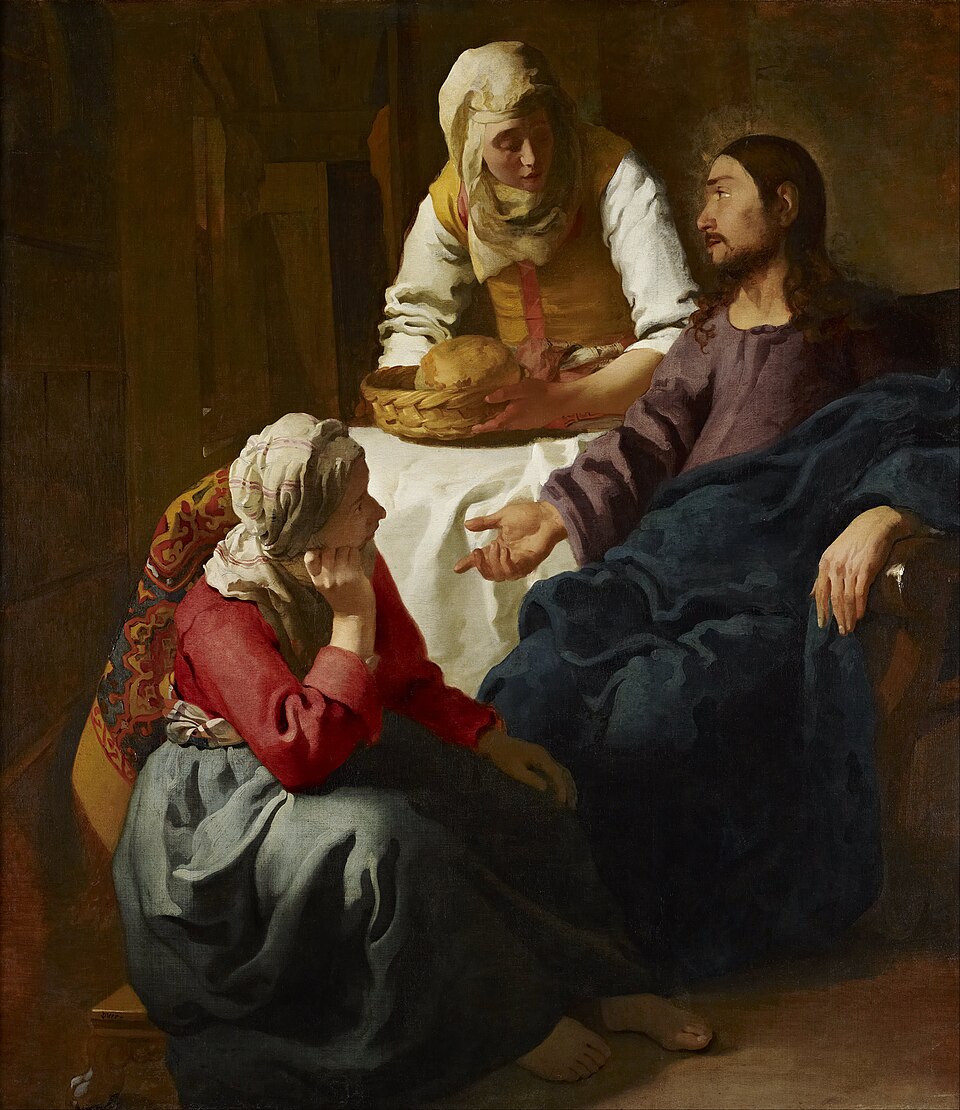
Description: This is a very different kind of Vermeer! It’s one of his earliest works and shows a biblical scene, which was rare for him. Jesus visits the home of two sisters, Martha and Mary. Mary sits at his feet listening, while Martha, busy with chores, complains. It shows a young Vermeer learning from the great Italian masters. This is the largest of all known Vermeer paintings and one of the only pieces he ever made with an overtly religious theme.
Painting Techniques: This painting is much larger than his later works and uses dramatic, bold colors and strong contrasts of light and shadow, influenced by Italian Renaissance and Baroque painters like Caravaggio.
Location: Scottish National Gallery, Edinburgh, Scotland
Estimated Value: Priceless
The Lacemaker (c. 1669-1670)

Description: This tiny painting shows a young woman completely absorbed in the delicate task of making lace. Vermeer brings us incredibly close to her, capturing her intense concentration. The blurry red and white threads in the foreground make it feel like we’re looking through a camera lens, with the focus sharply on her hands and the lace. Measuring just 24.5 by 21 centimeters, this is Vermeer’s smallest painting, yet its incredible detail and focus give it a powerful, monumental feeling.
Painting Techniques: Vermeer uses what we would now call ‘differential focus.’ The foreground is abstract and out of focus, which brilliantly directs our attention to the crisp, clear details of the lacemaker’s work.
Location: The Louvre, Paris, France
Estimated Value: Priceless
Inspiration and Legacy
Johannes Vermeer did not work in a vacuum. He was part of the bustling art scene of the Dutch Golden Age and was influenced by painters from the Delft and Utrecht schools, such as Carel Fabritius, known for his experiments with perspective, and the ‘Utrecht Caravaggisti,’ who brought dramatic light and shadow techniques from Italy. However, Vermeer’s legacy is unique. After his death, he was largely forgotten for nearly 200 years! It wasn’t until the 19th century that he was rediscovered and hailed as a genius. Since then, he has inspired countless artists, including Salvador Dalí, who painted his own version of ‘The Lacemaker.’ Modern photographers and filmmakers are also huge fans, studying Vermeer’s work to learn how to master light and composition.
Final Thoughts on Top 10 Vermeer Paintings
Johannes Vermeer’s world was small, but his talent was immense. He showed us that extraordinary beauty can be found in the most ordinary moments. His masterful use of light, his peaceful and mysterious scenes, and his incredible attention to detail make his art timeless. While we have only a few dozen of his works, each one is a perfect little world to get lost in. The enduring magic of Vermeer paintings lies in their ability to make us pause, look closer, and appreciate the quiet, sunlit moments of our own lives.
FAQs: Vermeer Paintings
Why are there so few paintings by Vermeer?
Vermeer was an incredibly slow and meticulous painter, likely completing only two or three paintings a year. He also had a large family to support and worked as an art dealer, which took up his time. He died young and in debt, which is another reason his body of work is so small.
What is Vermeer’s most famous painting?
While many of his works are famous, ‘Girl with a Pearl Earring’ is widely considered his most iconic and recognized masterpiece. It is often compared to the ‘Mona Lisa’ for its enigmatic expression.
Did Vermeer use a camera to create his paintings?
Vermeer didn’t use a camera as we know it today, but many experts believe he used a ‘camera obscura.’ This was a darkened box with a lens that could project an image onto a surface. It likely helped him perfect his composition, perspective, and handling of light, but he never simply traced the images.
What makes Vermeer’s use of light so special?
Vermeer treated light like a subject itself. He perfectly captured how it would fall from a window, reflect off different surfaces like metal or fabric, and create soft shadows. This gives his paintings an incredibly realistic and luminous quality that still amazes viewers today.

